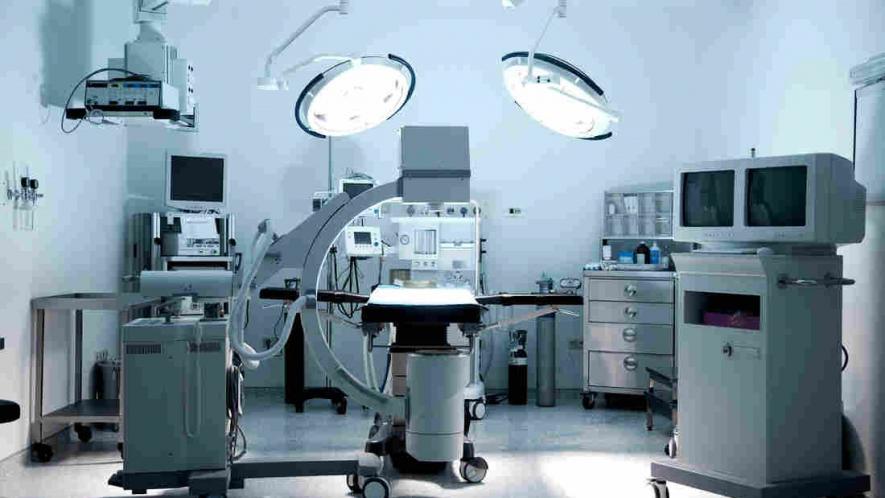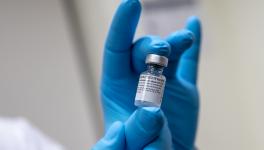Do we need powerful Law on Medical devices in India?

Image Courtesy: NPR
The recent global investigation – Implant Files – by International Consortium of Investigative Journalists (ICIJ), which portrayed the sorry picture of India’s medical devices industry, points to the need to have a strong legislation in this sector. Though India’s medical devices market has become the hub of global majors like Medtronic, Stryker, Abbott, Bayer and Johnson & Johnson, a legislation for the comprehensive regulation of the sector, the Medical Device Regulation Bill, was brought only in 2018.
The Bill had been drafted in 2006 by the then UPA government. Following that, under the current NDA government, a Group of Ministers (GoM) was constituted under the Union Finance Minister Arun Jaitley. However, the GoM had postponed the legislation, and had introduced the Medical Device Rules and Regulations. The new set of rules was released in 2017, and notified on January 1, 2018.
The delay of over 12 years in the enactment of a proposed legislation explains how the successive governments have treated the medical device sector.
Apart from this baby step towards the regulation, in 2015, the Materiovigilance Programme of India under the Indian Pharmacopoeia Commission was launched. It examines the “reports of adverse events and passes them on to the Central Drug Standard Control Organisation (CDSCO) for action, such as recall”.
Read More: Draft Pharmaceutical Policy: Directionless and Inadequate
In India, which is the fourth largest medical devices market in Asia after Japan, China and South Korea, “the need to recognise implants as separate vertical with its own regulatory framework has been ignored”. The fact is that regulation and management is done under the Drugs and Cosmetics Act of 1940.
Currently, only 23 categories of medical devices are regulated as ‘drugs’ under the Drugs and Cosmetics Act, 1940 (“D&C Act”). The notified medical devices include disposable hypodermic syringes, disposable hypodermic needles, disposable perfusion sets, in-vitro diagnostic devices for HIV, HBsAg and HCV, cardiac stents, drug eluting stents, catheters, intra ocular lenses, I.V. cannulae, bone cements, heart valves, scalp vein set, orthopaedic implants, internal prosthetic replacements, and ablation devices.
Blood grouping sera, skin ligatures, sutures and staplers, intra-uterine devices (Cu-T), condoms, tubal rings, surgical dressings, umbilical tapes and blood/ blood component bags are also regulated as ‘Drugs’ under Drugs & Cosmetics Act, 1940 & Rules, 1945.
Read More: Why is the Private Hospital Sector so Difficult to Regulate?
“One peculiar feature of the Indian medical device industry is that it is largely unregulated. The Indian government has regulated only a few types of medical devices. All other types of medical devices are unregulated, meaning there is no government oversight on its manufacture, import, distribution and sale,” says a report on the Indian Medical Device Industry. Though the Medical Device Rules, 2017, which has to come into effect from January 1,2018, has expected to fill the legislative void that is currently present due to the absence of a medical device specific legislation in India, the ICIJ report shows it could not do much.
As per the report, there was a steady increase in the device related complications in the patients who have undergone implantation surgery. At the same time, Indian Pharmacopoeia Commission (IPC) data says that “medical device adverse events” rose from 40 in 2014 to 556 in this year.
At present, Johnson & Johnson faces a case in Supreme Court of India over faulty hip implants that have spoiled the lives of more than 4,000 people. The pharma major marketed devices even after eight years of the product being recalled globally.
Read More: Johnson & Johnson To Face Heat Over Faulty Hip Implants
How did they manage to sell their products that was withdrawn from market? Is it because of poor regulation? The Indian regulatory system that involves IPC and the Central Drugs Standard Control Organisation (CDSCO) has failed to make public the details of the devices that are recalled from the Indian market.
Get the latest reports & analysis with people's perspective on Protests, movements & deep analytical videos, discussions of the current affairs in your Telegram app. Subscribe to NewsClick's Telegram channel & get Real-Time updates on stories, as they get published on our website.
























